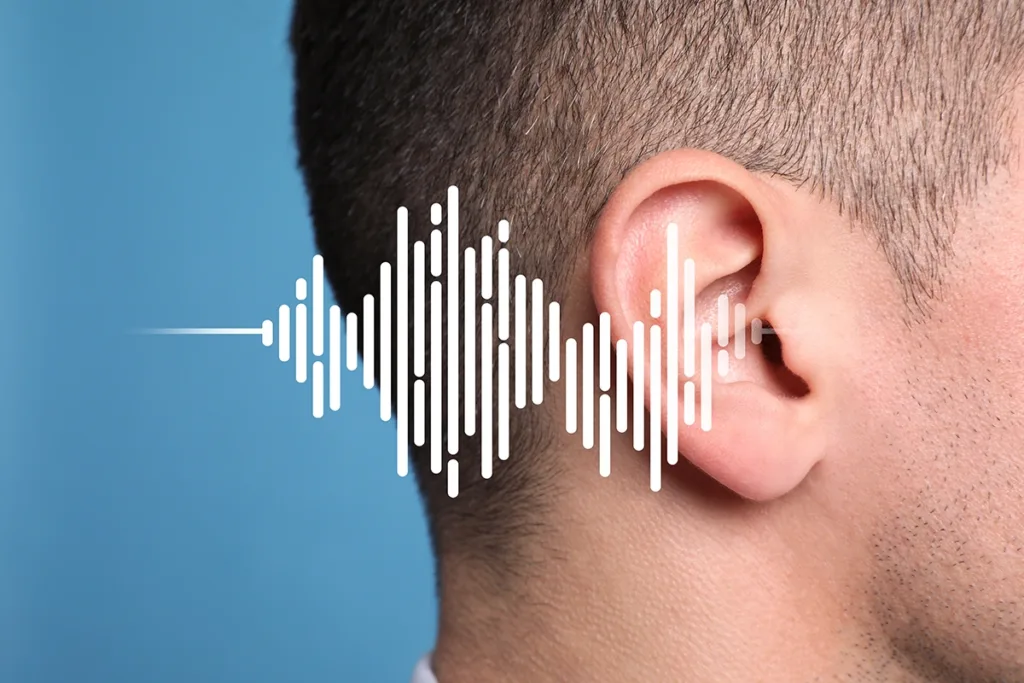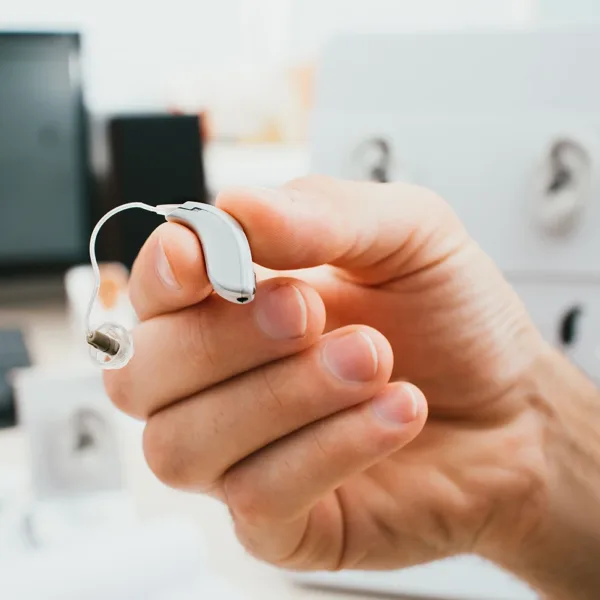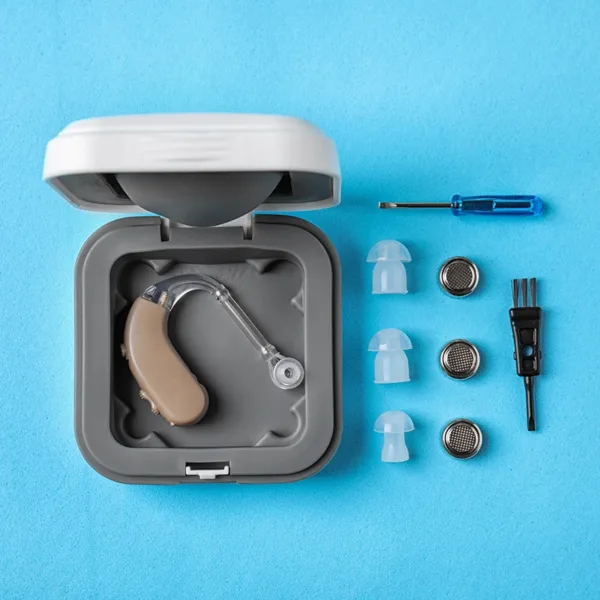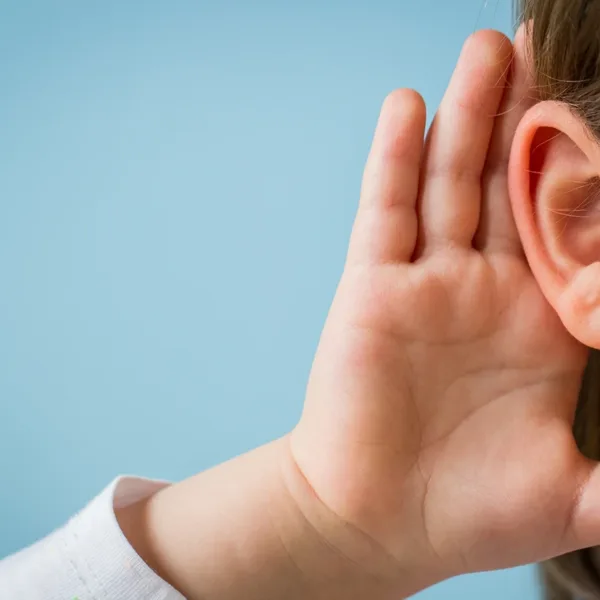
In the United States, around 48 million people are affected by some degree of hearing loss. Around 5%-15% of hearing loss cases can be attributed to conductive hearing loss (CHL). This type of hearing loss can affect both adults and children regardless of age and occurs when sounds are partially or fully blocked from reaching the inner ear. In this guide, we provide a detailed overview of what conductive hearing loss is, common symptoms to look out for, and how it can be treated.
Understanding Conductive Hearing Loss
Conductive hearing loss (CHL) occurs when sound waves are prevented from properly reaching the inner ear, effectively making all sounds quieter and harder to hear. This is typically due to blockages or damage to the outer or middle ear, which prevents sound from effectively reaching the cochlea, which is located in the inner ear.
The cochlea is a sensory organ responsible for converting sound into signals that are sent to and interpreted by the brain. In some cases, people may have mixed hearing loss, which is a combination of both conductive and sensorineural hearing loss. Sensorineural hearing loss (SNHL) occurs when there is damage to the inner ear, or the cochlea.
Symptoms of Conductive Hearing Loss

Symptoms of conductive hearing loss can vary depending on the severity of the condition, and the factors responsible for each individual case. Some of the most common symptoms of conductive hearing loss include:
- Muffled or distorted sound perception
- Difficulty understanding speech
- One or both ears feeling congested, plugged up, or experience a sensation of pressure
- Dizziness, or issues with balance
- Pain, discomfort, or tenderness in the ear
- Tinnitus (ringing, humming, or buzzing in the ears)
- Your own voice sounding different to you
If you are experiencing any of these symptoms, it’s important to schedule an appointment for a hearing test as soon as possible, so you can receive treatment in a timely manner.
Causes of Conductive Hearing Loss
Conductive hearing loss is a result of a blockage or damage occurring in the outer or middle ear. The block prevents sound waves from properly reaching the middle ear or cochlea, resulting in reduced hearing function. This can be caused by a wide range of things including fluid, earwax, growths, cysts, inflammation, foreign objects, and more.
The sections below provide a more detailed overview of some of the most common causes of conductive hearing loss.
Earwax Buildup (Cerumen)
One of the most common causes of conductive hearing loss is earwax buildup. Earwax, also known as cerumen, is naturally produced by glands in the ear canal to protect and lubricate the ear. However, an excessive buildup of earwax can lead to a blockage in the ear canal resulting in reduced hearing function.
Ear Infection
Ear infections are often caused by bacteria or viruses infecting the outer and/or middle ear. Infections can lead to a buildup in the outer ear canal and/or the accumulation of fluid in the middle ear, resulting in reduced hearing until the fluid is drained and the infection is treated.
Eardrum Damage
The eardrum plays a vital role in transmitting sound vibrations to the middle ear. However, if the eardrum is damaged, this process is interrupted resulting in changes to hearing quality. Some common reasons for eardrum damage include trauma from a sudden loud noise, infection, or physical injury to the ear.
Abnormal Bone Growth (Otosclerosis)
Otosclerosis is a condition characterized by abnormal bone growth in the outer ear. The excess growth can limit sound from effectively conducting through the ear canal, resulting in reduced hearing abilities.
Outer or Middle Ear Malformations
Malformation of the outer or middle ear refers to congenital or developmental abnormalities in the shape or structure of the ear canal, eardrum, or middle ear bones. These malformations can disrupt the normal transmission of sound waves, impacting hearing capabilities.
Diagnosing of Conductive Hearing Loss

Conductive hearing loss is diagnosed through a comprehensive hearing test, which is performed by a professional hearing healthcare specialist. This exam is designed to evaluate your hearing quality and overall auditory health. Your hearing health specialist will first review your medical history, and then ask you about your specific symptoms and concerns. From there, they will perform a series of diagnostic tests.
The diagnostic testing typically includes a physical examination of the ear to identify any visible blockages such as earwax buildup, or abnormalities in the ear canal or eardrum. Pure-tone and speech audiometric testing will also be done to assess your ability to hear different frequencies and volumes, providing insight into your overall hearing capabilities. A tympanometry test may also be performed, which will assess the movement of the eardrum in response to changes in air pressure.
Conductive Hearing Loss Treatment
Conductive hearing loss is not always permanent, and depending on the cause, some cases of CHL can be treated with medications, surgery, or other medical interventions. The best treatment for CHL depends on the cause, as well as the patient’s overall health and needs.
For instance, conductive hearing loss resulting from eardrum damage can be permanent or temporary, depending on the extent and nature of the injury. Minor tears or perforations may heal on their own or with medical intervention, while severe or untreated damage can lead to permanent hearing loss.
Earwax Removal
Conductive hearing loss caused by earwax buildup is generally not permanent and can be resolved once the earwax is removed. However, if the earwax impaction leads to complications such as infection or damage to the ear structures, there is a possibility of permanent hearing loss.
Antibiotics
Conductive hearing loss caused by an ear infection is often temporary and can be reversible with appropriate medical treatment, such as antibiotics. However, if the infection is severe or recurrent, it may lead to chronic damage, potentially resulting in permanent hearing loss.
Surgery
In some cases, surgical interventions to remove abnormal growths like tumors or otosclerosis can restore hearing function. However, if the malformations or growths are left untreated for longer periods of time or cause irreversible damage, permanent hearing loss is possible.
Hearing Aids
In some cases, when other treatments for CHL are ineffective and the condition has become permanent, hearing health specialists may recommend bone-conduction hearing aids. Bone conduction hearing aids bypass the outer and middle ear by transmitting sound vibrations directly to the inner ear which then stimulate the cochlea.
Schedule a Hearing Test at an Audibel Clinic Near You Today
Understanding the symptoms, causes, and treatments for conductive hearing loss is vital for maintaining overall auditory health. Early detection and appropriate intervention not only enhance the chances of successful treatment but also contribute to your overall health and wellness and a better quality of life.
Don’t hesitate—find an Audibel hearing center near you to schedule a hearing exam today and take the first step toward optimal hearing health.







Have a question or Comment?